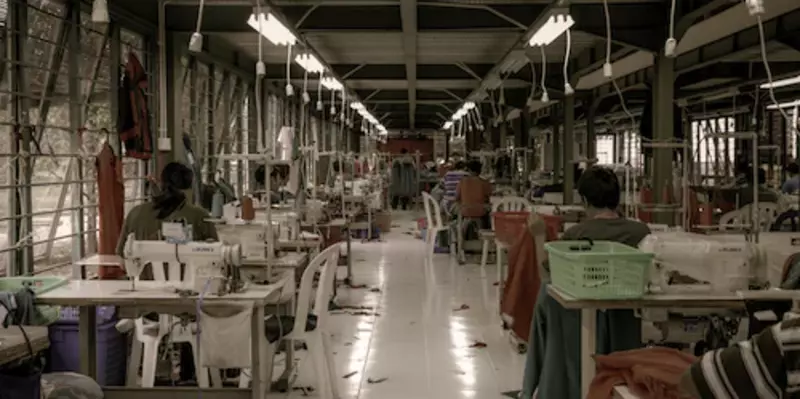Industrial economic size refers to the scale or size of industrial activities within an economy, typically measured by the total output, employment, or capital investment of the industrial sector. It is a key indicator of the level of economic development and competitiveness of a country or region. The size of the industrial sector can vary greatly between countries, depending on factors such as natural resources, labor force, technological advancements, infrastructure, and government policies.
A larger industrial economic size can provide several benefits, such as higher productivity, employment opportunities, and economic growth. However, it also requires significant investment in infrastructure and technology, as well as skilled labor force to sustain its operations.
Some of the features of the economic size of Pakistan’s textile industry include:
1. Limited Scope: Efficiency, Innovation and Sustainability are the key elements that indicate the scope of an industry. An efficient industry can produce high-quality textiles at a lower cost, allowing it to offer competitive prices in the international market. In contrast, an inefficient industry may struggle to compete, leading to lower revenues and reduced growth potential. Innovation is also critical for the textile industry’s long-term success.
Limited access to capital in the industrial sector of Pakistan, coupled with unprofessional managers, results in low productivity for several reasons. Firstly, without adequate access to capital, industrial units are unable to invest in modern technologies, equipment, and infrastructure that can boost productivity.
Secondly, unprofessional managers may lack the necessary skills and experience to manage operations effectively, resulting in inefficiencies and waste. In addition, limited access to capital often leads to a reliance on informal financing sources, such as family and friends, which may be insufficient to support the growth and expansion of industrial units. This results in a lack of competitiveness and innovation in the market.
Firms in Pakistan have not achieved the same level of growth and competitiveness as those in India or other regional players, due to various factors such as political instability, regulatory unpredictability, limited access to finance, and lower levels of human capital development.
The “Seth Culture” has hampered the country’s productivity and competitiveness. It has contributed to a lack of competition and innovation in the Pakistani economy, as businesses are often owned and operated by a small group of individuals who prioritize their own interests over those of the broader economy.
This has led to a concentration of wealth and power among a few elites, which has limited economic opportunities for others and stifled entrepreneurialism contributing to a low level of productivity, with the country’s workers producing far less output per hour than workers in other countries. This, in turn, has limited the country’s ability to compete in the global market and attract foreign investment.

Pakistan has a high prevalence of zombie firms, a decline in private investments, and a limited presence of large firms, which suggests inefficiencies in resource allocation. The low presence of high-growth firms (HGFs) and a small number of superstars (top exporters) impede growth and diversification of exports. Furthermore, the crowding-out of private sector credit by government borrowing has reduced incentives for innovation.
The differences in productivity explain variation in standards of living among countries, with productivity limiting distortions being high in Pakistan. Some of these distortions include size-dependent policies, high import duties, and entry-level distortions. These distortions create barriers to entry, reduce the number of firms in the market, limit innovation, and stimulate informality.
Removing these distortions could potentially increase aggregate productivity by 40%. Pakistan faces productivity challenges, with publicly listed firms experiencing a decline in aggregate total factor productivity over the period 2012-2020. Poor managerial practices and limited technology adoption are some of the reasons for this decline. Innovation and productivity are strongly linked, and patent applications and investment in R&D have declined in Pakistan in the past decade. Growth in international trade and global value chains have significant effects on development.
In Pakistan’s case, its per capita GDP growth has been inconsistent and generally low for the past two decades, with occasional periods of rapid growth interrupted by external vulnerabilities and Balance of Payments crises. The country’s growth model is centered on consumption and government expenditure rather than investment and exports, leading to a lack of investment, savings, and export culture. With limited foreign direct investment and low exports, financing the current account imbalance has become a challenge, resulting in foreign exchange shortages and a depreciation of the Pakistani rupee. As a result, Pakistan is facing challenges in liquidity, debt sustainability and therefore a limited scope.

In Pakistan, small industrial unit sizes have been identified as a major factor that hamper productivity and innovation in the industrial sector. Small industrial unit sizes in Pakistan limit access to resources and economies of scale, hindering investment in research and development, technology, and expansion. Initiatives to promote the growth of small and medium-sized enterprises aim to increase productivity and competitiveness.
2. Variations in Industry Structure: The structure of Pakistan’s textile industry refers to the various stages involved in textile production, such as fiber production, spinning, weaving, knitting, dyeing, printing, and finishing. The structure of the textile industry can vary from country to country, depending on factors such as access to raw materials, labor costs, and technological advancements.
For instance, Pakistan’s textile industry has a significant focus on the production of cotton yarn and fabric, with the country being one of the largest cotton producers globally. This structure reflects the abundance of cotton as a raw material in Pakistan, making it an attractive location for textile manufacturing. In contrast, some other countries may have a more diversified structure, with a focus on producing finished garments or value-added products, such as high-end fabrics or technical textiles.
Comparing the economic sizes of textile industries across different countries can be challenging due to these structural differences. However, since different countries have different industry structures, this measure may not accurately reflect the relative competitiveness of their textile industries. For example, if a country produces a high volume of raw cotton, it may have a larger economic size than a country that specializes in producing high-end fabrics, even if the latter’s textile industry is more advanced and technologically sophisticated.
When comparing the economic size of Pakistan’s textile industry to other countries, it is essential to consider the specific structure of each industry to make a fair comparison. This means looking at metrics beyond just the value of goods produced, such as employment levels, export volumes, or technological advancements. By doing so, we can gain a more nuanced understanding of the textile industry’s performance in different countries and identify areas for improvement.
3. Different Economic Environments: The economic environment in which the Pakistan textile industry operates refers to the various factors that impact the industry’s performance, such as trade policies, labor laws, and infrastructure. These factors can vary significantly between countries, creating different economic environments that can influence the industry’s economic size and overall competitiveness.
Trade policies, for example, impact the Pakistan textile industry’s ability to compete in the global market. Tariffs, subsidies, and quotas can affect the cost of imported and exported goods, making it more or less attractive for businesses to operate in Pakistan. Changes in trade policies can lead to fluctuations in demand for Pakistani textile products, affecting the industry’s economic size and growth potential. The recent discontinuation of the ZRI Package, for example, has created an economic catastrophe for the industry, closing 20% of the industry due to higher electricity tariff.
Labor laws are also an essential factor in the economic environment that can impact the Pakistan textile industry’s performance. The cost of labor, labor regulations, and the availability of skilled workers can all affect the industry’s competitiveness. In some countries, labor laws may be more restrictive, leading to higher costs and potentially reducing the industry’s economic size.
Infrastructure is another critical factor in the economic environment that can influence the Pakistan textile industry’s performance. The availability and quality of transport networks, power supply, and communication systems can impact the industry’s efficiency and productivity. A lack of infrastructure can lead to delays in production, increased costs, and reduced competitiveness.
Different economic environments can create different challenges and opportunities for the industry, impacting its economic size and overall competitiveness. To address these challenges, policymakers and industry stakeholders need to work together to create an enabling environment that supports the industry’s growth and development. This may involve reforms to trade policies, labor laws, and infrastructure development initiatives to support the industry’s economic size and competitiveness. Restoration of the ZRI Package in this scenario is necessary.
4. Changing Global Market Conditions: The global textile market is subject to constant change, driven by factors such as evolving consumer preferences, technological advancements, and changes in international trade policies. These changes can have a significant impact on the performance of Pakistan’s textile industry, both positively and negatively.
Consumer preferences are a major driver of change in the global textile market. As consumers become more aware of sustainability and ethical issues, they may demand eco-friendly and socially responsible products. This can create opportunities for Pakistan’s textile industry, which has been working towards sustainability and ethical production practices. On the other hand, changes in consumer preferences towards new materials, designs, and styles can also pose challenges to the industry, requiring businesses to invest in research and development to stay competitive.
Technological advancements are another major factor that can impact the Pakistan textile industry’s performance. Innovations in production processes, such as automation and digitalization, can increase efficiency, reduce costs, and improve product quality. However, these advancements also require significant investments in technology and skilled labor, which can be challenging for smaller businesses in the industry.

For Pakistan to attain higher economic growth, it must enhance its textile sector by incorporating value addition, specifically in the highly productive cotton-focused industry. The Pakistani textile millers need to concentrate on specialized yarn to cater to the burgeoning market for athleisure and sportswear. Nevertheless, the country’s fixation on short staple fiber raw cotton and the existing MMF tariff regime impedes its ability to keep pace with the rest of the world, causing it to disregard the rapidly expanding MMF market that dominates more than 70% of the global textile trade.
International trade policies are also an important factor that can influence the global textile market and, consequently, the Pakistan textile industry’s performance. Changes in trade policies, such as tariffs, subsidies, and trade agreements, can affect the cost of imports and exports, creating opportunities or challenges for businesses in Pakistan. For example, the recent trade tensions between the US and China have created opportunities for Pakistan’s textile industry to increase exports to the US market.
Therefore, it is crucial for Pakistan’s textile industry to stay informed and adaptable to changing global market conditions. By monitoring trends in consumer preferences, investing in new technologies, and keeping up-to-date with changes in international trade policies, the industry can remain competitive and adapt to changing market conditions, maintaining its economic size and growth potential.
In conclusion, Pakistan’s growth model, which relied on state intervention and protectionist policies, has hindered its industrial sector’s growth, leading to a narrow export base and limited diversification. The country requires policy reforms to promote competition and innovation, such as improving access to finance for small and medium-sized businesses, reforming regulations, and investing in education and skills development. The textile industry is vital to Pakistan’s economy, but it faces challenges such as limited scope, low productivity, and declining investment and exports. To address these, the country must remove entry barriers, promote innovation, productivity, and sustainability, and prioritize transparency and accountability in business operations. By implementing these policies, Pakistan can promote growth in its industrial sector and continue to make a positive impact on the economy.
Written by: Shahid Sattar and Amna Urooj-www.aptma.org.pk



















